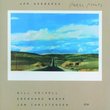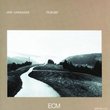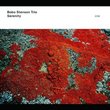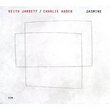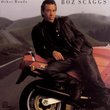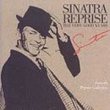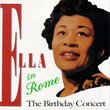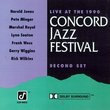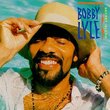| All Artists: Jan Garbarek Title: Dis Members Wishing: 2 Total Copies: 0 Label: ECM Records Release Date: 5/10/1994 Genres: Jazz, Pop Styles: Modern Postbebop, Bebop Number of Discs: 1 SwapaCD Credits: 1 UPC: 781182109322 |
Search - Jan Garbarek :: Dis
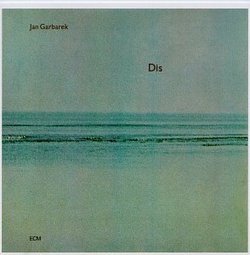 | Jan Garbarek Dis Genres: Jazz, Pop
|
Larger Image |
CD DetailsSimilar CDs
Similarly Requested CDs
|
CD ReviewsCritical Release by a Major Artist C. H Smith | Bowling Green, Kentucky United States | 08/14/2000 (5 out of 5 stars) ""Dis" was my first exposure, some twenty years ago, to the music of Jan Garbarek, and in retrospect it seems to me that this was the album that gave Garbarek the focus that would later make him the great artist he has become. Before "Dis" Garbarek recorded a number of good albums; in those days he was heavily influenced by John Coltrane and seemed to seek out rather conventional venues for his (often rather derivative-sounding) performances. With "Dis" this all changed. The album spotlights a set of intricate duets with the equally renowned guitarist Ralph Towner and, in wonderful atmospheric union, a windharp. The music is not exactly jazz, but rather something of a time and place: the emotions stirred are something like what one might experience while spending a lazy Sunday stretched out on a fogbound iceberg. For any Garbarek fan a must purchase, for anyone else merely an exciting new experience." Entrancing the Silence Gustave O. Frey | Oracle, AZ | 11/03/2006 (5 out of 5 stars) "This music puts me into a meditative trance. The windharp sounds like a didgeridoo and evokes the coastal landscapes of Norway, where its strange sounds were recorded. Norwegian saxophonist Jan Garbarek and guitarist Ralph Towner speak from a silence that has not been broken, so much as JOINED, by the sounds of the windharp.
I give the music a 4 and the silence a 1 for an overall rating of 5 stars. Garbarek can and does perform more virtuoso saxophone on other releases, such as "Of Mist and Melting" by Bill Connors and at least three Keith Jarrett releases: "Belonging," "My Song," and the live "Nude Ants." In fact, some of the music on "Dis" is downright irritating. So how do they create the trance? First, Garbarek is capable of achieving great drama with his Gato Barbieri-influenced tenor lines. So it is more like you are confronted in a way that requires you to abandon everything else on your mind. On soprano, he pulls in Middle Eastern sounds and his wailing drains you of whatever's left. So, while you can see and lament the limitations of the music, you feel your body succumbing to the mood of extreme introversion. At the same time, you are wide awake because, while the two voices seem to wander away from each other often, they just as often converge to highlight wonderful points along the waves introduced and periodically sustained by the windharp. Towner's impeccable timing and complexities manage to corral in Garbarek's somewhat sloppy lead to produce something that is just right: not too anal and not too silly. Spanish motifs appear in Garbarek's leads as well as in Towner's flamenco touches so that the bleak Norwegian temperament is infused with just the right amount of passion. Some people may find it too morose though. (I'm Swedish, so I'm used to gloom and doom for breakfast.) What is so compelling about this silence/sound dynamic and what connections can be drawn? I think of the enhanced silence one sometimes experienced within a large city like New York, usually late at night when reverberations from the teeming current of humanity - its compressed sounds, smells and impressions - all rang in your head to form a great bell jar. And you were the egg. It captures the essence of that almost silent jazz, reflecting the city's extremely, pathologically, introverted alter-ego. John Coltrane couldn't really pull this off because he was too strong, visionary and unhinged. But a skinny, cloistered, uncertain Viking like Garbarek can and he does. So, when Garbarek gives you a brief wall of sound, he blows your mind in a way Coltrane, with his many walls, does not. (If Coltrane is Beethoven, then Garbarek is Schubert, combing the beach with his little pail, collecting some of the treasures left behind by the storm's great waves.) As "Dis" well illustrates, one of the best ways to make musical points is to combine acoustic instruments capable of both lyrical expression and percussive harshness - like saxophone and guitar - in compositions that wander about sans a rhythm section in the dark. Dramatic passions, mixed with neurotic, flamenco-like outbursts, suck you into a singularity of pure darkness, one which is ultimately very empty and safe, if not serene. Garbarek's wood flute piece, the last track called "Dis," is an interesting idea, but it is totally out of place here. The sound is off-key and annoying and its lamentations break the trance. What would work would be to let the windharp play itself for a few minutes. The goal is to ditch reality for awhile and escape into the wind. The wood flute has too many hangups -- is much too troubled and earthy. He tries to drag in the Native American spirit world and it's not compatible. So, I take advantage of the lifter on my turntable and "remove" it." |

 Track Listings (6) - Disc #1
Track Listings (6) - Disc #1